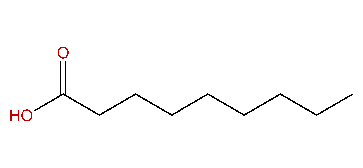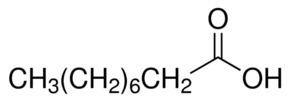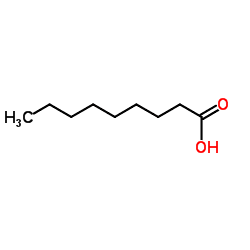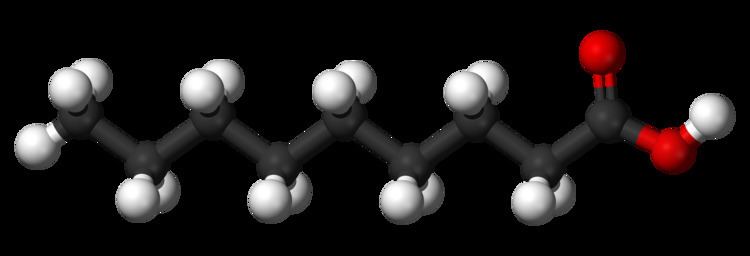Formula C9H18O2 Melting point 12.5 °C Density 900 kg/m³ | Molar mass 158.23 g/mol Boiling point 254 °C | |
 | ||
Appearance Clear to yellowish oily liquid | ||
Nonanoic acid, also called pelargonic acid, is an organic compound composed of a nine-carbon chain terminating in a carboxylic acid with structural formula CH3(CH2)7COOH. The esters and salts of nonanoic acid are called nonanoates. Nonanoic acid is a clear, oily liquid with an unpleasant, rancid odor. It is nearly insoluble in water, but very soluble in chloroform, ether, and hexane. It is commonly used in conjunction with glyphosate, a non-selective herbicide, for a quick burn-down effect in the control of weeds in turfgrass.
Contents

Its refractive index is 1.4322. Its critical point is at 712 K (439 °C) and 2.35 MPa.
Occurrence and uses

Nonanoic acid is a fatty acid which occurs naturally as esters in the oil of pelargonium. Synthetic esters, such as methyl nonanoate, are used as flavorings.
Nonanoic acid is also used in the preparation of plasticizers and lacquers.
The derivative 4-nonanoylmorpholine is an ingredient in some pepper sprays.
The ammonium salt of nonanoic acid, ammonium nonanoate, is an herbicide.
Potential pharmacological effects

Nonanoic acid may be more potent than valproic acid in treating seizures. Moreover, in contrast to valproic acid, nonanoic acid exhibited no effect on HDAC inhibition, suggesting that it is unlikely to show HDAC inhibition-related teratogenicity.



